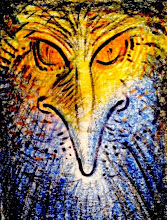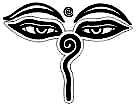
DUE: February 13th.
AIM: This project is an experiment which aims to defamiliarize the student to the experience of sight in order to understand better its question-ability. In this experiment, you must blindfold yourself and then ask yourself certain questions about the experience.
QUESTIONS: The student should consider the following questions before performing
this experiment then address ONE or more of them when you write your report.
What is it like, to see? What is the experience like?
What is the difference between your sense of place, location, and spatial layout when you can see as opposed to when you are blind? What is the difference between visual space and acoustic space?
How do your non-visual senses change when you cannot see?
How do your relations to others change when you cannot see?
What perceptual sensitivities are seeing people blind to? What things can blind people see/perceive/experience that ‘seeing’ people cannot?
What does it mean, to see?
INSTRUCTIONS: 1. Blindfold yourself for a min. 4 hours. The longer, the better response you’ll get. 6-8 hours is ideal. Locate your self in an environment that is very visually familiar to you, some place like your dorm room or living space that you know very well. If you work with a partner, then you can walk around and do some exploring.
2. Spend the first three hours of the experiment just trying to be receptive to your new condition. Think about the ways your other sense experiences change when you cannot see. Try to get into the strangeness of it.
3. After at least 3 hours, while still in a state of artificial blindness, you must perform a specific set of memory observations. You must record as many details about the visual look and contents of the space you are familiar with as you can remember. This is essentially a test of your visual memory. Try to think of everything you remember about what you can ordinary see and notice about the space, such as for example: photographs or images you have on the wall, the colors of surfaces, objects, odd visual details you customarily notice. Make a list of observations.
4. After the time is up, take off your blindfold. Now look over your list and check it with what you can now see. Record any differences, distortions or omissions.
5. Write a short 4 page analysis of your experience relating it to what we’ve discussed in class, in particular the writings from Sacks, Gregory and Sheldrake.


No comments:
Post a Comment